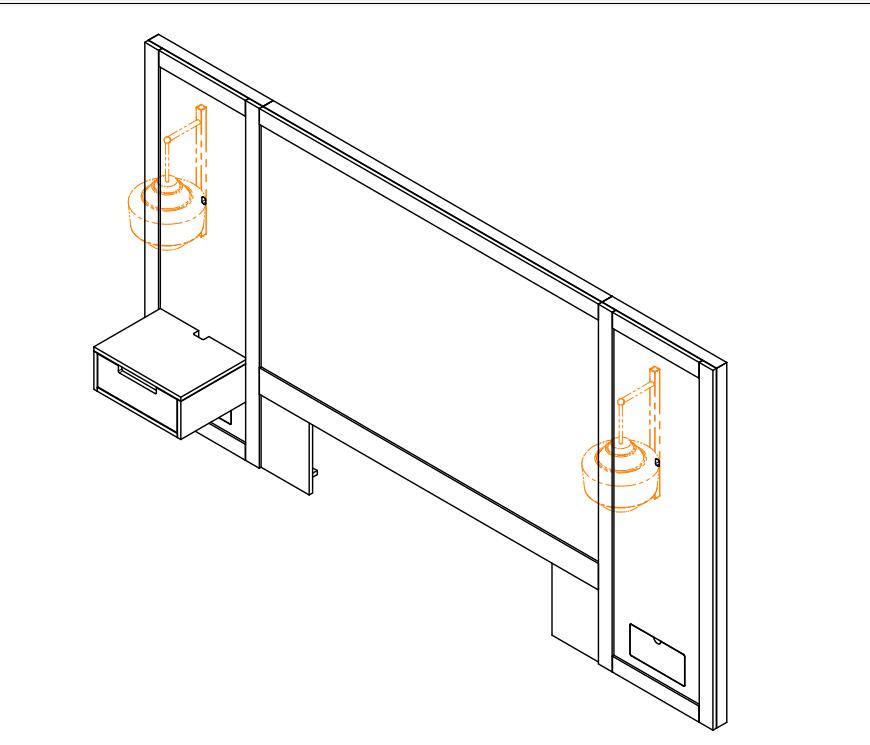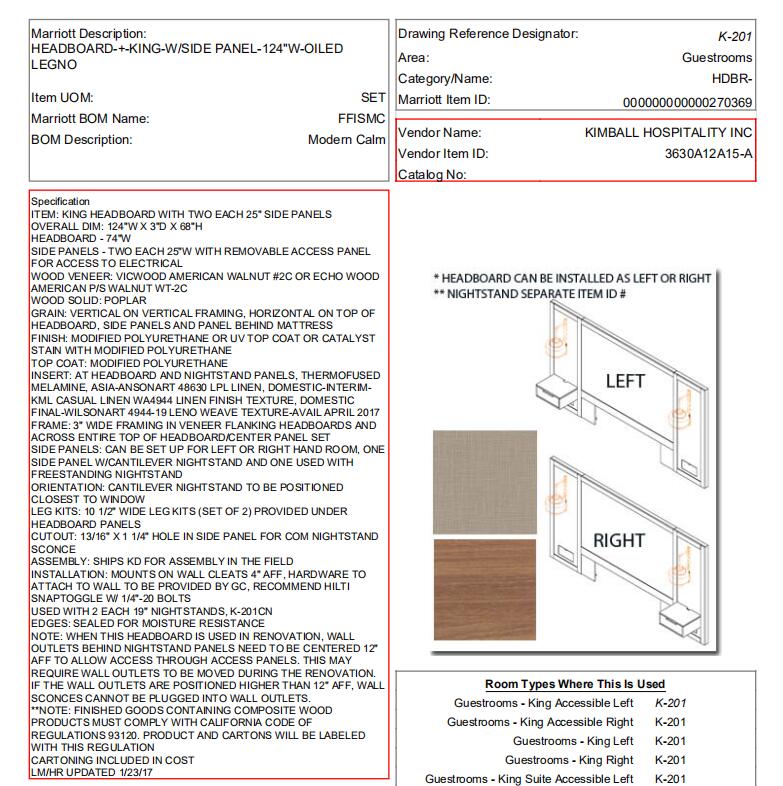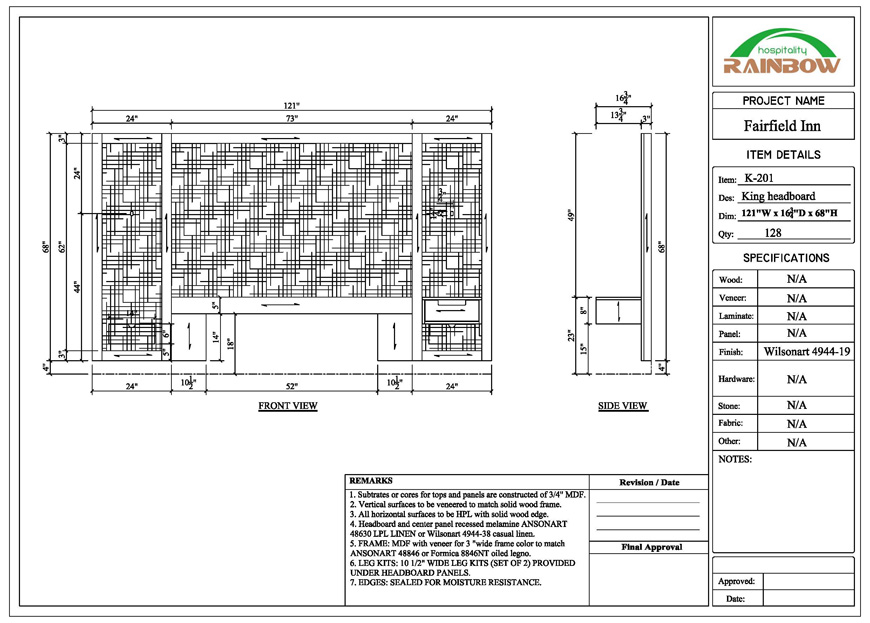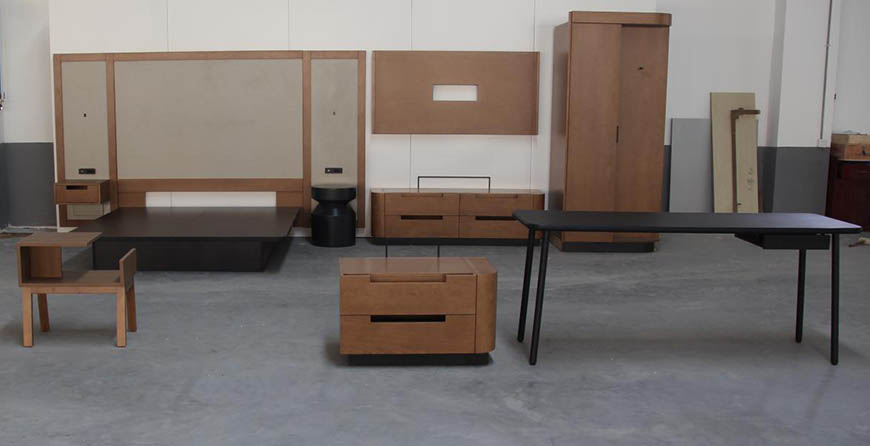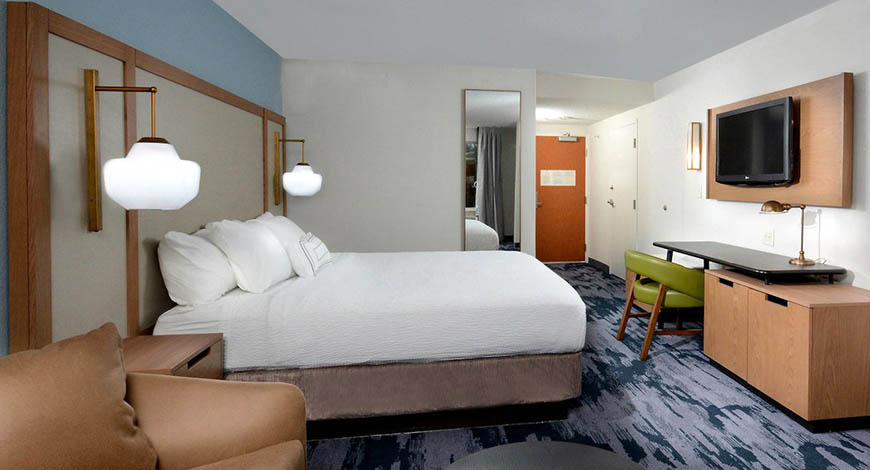 22
Apr
22
Apr
1. Functionality
One of the first things every hotelier should consider when specifying headboards is what the requirements of the headboard are from a functional point of view.
I think you should consider below questions :
Dimensions - What size will the headboard need to be to work with a “zip and link” bed in either configuration? i.e. When adjoined as a double bed or separated to make two twin beds. For standard headboard sizes visit our hotel headboards page.
Light fittings - For more bespoke headboards that aren't fully upholstered, will you be installing any of your bedroom lighting inside the headboard panels? If so, how is the switching to work from the bed? How are switches and lights to be positioned with zip and link beds to ensure that they work with both bed configurations?
Free or fixed - Are the bedsides going to be integral to the headboard or will they be freestanding? Again, what are the implications with zip and link beds?
Once these kinds of questions are answered, the process of completing your headboard design will become much easier and will allow you to start eliminating any bad ideas very early on in the process.
2. Working to your Budget Effectively
Regardless of what scale of budget your hotel is working with, the headboard should always feel considered and appear as stylish as possible as it's a key piece of furniture within the hotel bedroom that can change your guests’ experience of your hotel on the whole. Many of your guests will subconsciously judge the entire bedroom based almost purely on how the bed has been dressed and how the headboard looks. Therefore, considering the finer details of your headboard design and the impact it has on your guests as they walk into the room should always be top of your list!
Whilst every hotelier wishes for grand headboards with height, masses of detail and expensive upholsteries, hotel refurbishment budgets may be restrictive and for many independent hotels working to a tight budget effectively is of paramount importance. However, even if the budget is relatively limiting, there are some easy ways of cutting costs without making your headboards appear to be cheap and somewhat underwhelming.
Size – Lowering the height of your headboard is an obvious one, yet a simple way of reducing the cost immediately. Alternatively, does the entire headboard require upholstery or just the lower section?
Fabric Choice - Consider using fabrics or faux leathers that are more cost effective, a less textured fabric with fewer integrated colours will help to significantly lower the price. For hotels on a challenging budget, Lugo recommends balancing out the costs by possibly using a plainer material and combining with more affordable detailing options such as piping or studs to dress your headboard and retain a luxurious aesthetic.
Detailing - Other details such as fluting or deep buttoning can be used with more moderation. For example, instead of having a high number of deep buttons across the entire headboard, or thin fluting that will make the headboard more intricate and expensive, you could potentially use fewer buttons or flutes but simply make them bigger. This way you will still keep an element of detail in the headboard whilst lowering the potential cost.
blue-patterned-hotel-headboard
3. Finding the Right Fabric
Choosing the right fabric for upholstered headboards is one of the most important decisions to be made in this process. As the focal point of the room, of course everybody wants the fabric to look great aesthetically but as a hotelier there are many other, more challenging things to consider, one of which is how your fabric of choice will wear over time and how you’re going to keep it looking as good as it did on day one.
Abrasion – One of the first things you should be aware of when choosing a fabric for your upholstered headboards is abrasion. Whether you run a small independent hotel or a large chain of hotels, appropriate choice of fabric with a high resistance to abrasion is an obvious, yet fundamental attribute your chosen fabric will need to have. Using the guide of the Martindale rub test, Lugo recommends choosing a fabric with at least a minimum of 40,000 rubs in order to avoid your headboard from wearing prematurely and starting to look tired because of wear marks or threads pulling. To find out more about contract quality fabrics visit our fabrics and finishes page.
Cleaning - Your headboard shouldn’t be a housekeeper’s nightmare when it comes to getting rid of any marks or stains left from the transfer of hair products on to the headboard – make their life easier and choose a fabric that can be cleaned effectively, which will, in turn, prolong the lifespan of your headboard. More headboards are upholstered in faux leather than any other upholstery option for a good reason.
Durability - Lugo recommends considering a fabric with soil-disguising properties that can be maintained easily. Modern technology in faux leather design has resulted in more elaborate design possibilities whilst still maintaining its core low maintenance properties. For textile upholsteries, considering a pattern or a more textured finish over a flat colour can be a good choice for some bedrooms as this will generally make your fabric rather more forgiving on the eye if it does eventually stain over time.
Pattern repeat - If you decide that the design of your headboard will involve a patterned fabric, something to consider is the scale of the pattern in relation to the headboard size and how many pattern repeats you will get out of a metre of fabric. If you need more than just one piece of fabric to cover your headboard, you may potentially be left with an unwanted and unsightly seam where the next piece of fabric joins and this can spoil the desired effect.
Thinking of refurbishing your hotel bedrooms? Speak to the team at rainbow they can give you best suggestions and help you manufacture the suit headboard for your hotel.Take a example for your reference,below photoes are rainbow made for Fairfield Inn by Marriott.
